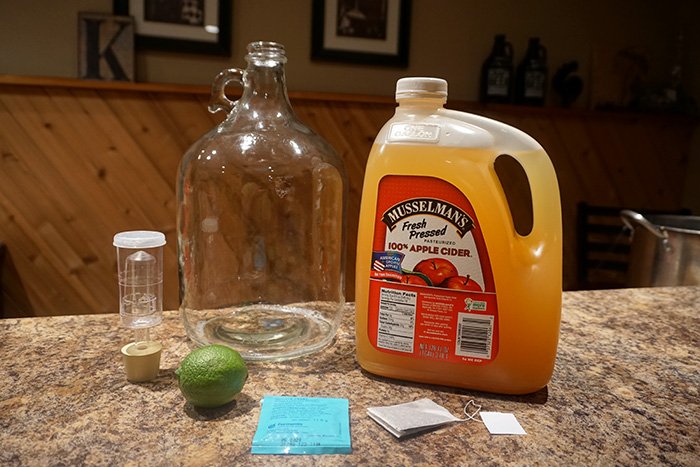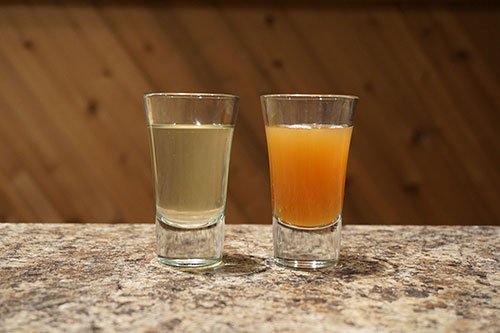If you’re new to cider making, there may come a time when you see a questionable foam layer on top of your cider and wonder if you messed up. Or maybe you have read about krausen and wonder why you have never had it form.
While the development of krausen is not necessarily important for cider fermentation I think it is important to understand what it is and how to differentiate krausen from other things that may pop up.

What is Krausen?
Pronounced kroy-ZEN, krausen describes the thick foam layer that can develop on top of cider at the beginning of fermentation.
While this foamy head of yeast is a crucial part of brewing beer, it is only an indicator of fermentation for the cider maker. Depending on the strain of yeast being used and temperature it may not even appear at all.
See, apple juice has very little protein compared a beer wort. This protein is a major building block for krausen. The lack of protein in cider creates a fragile foam that is easily destroyed by vigorous fermentation.
In my ciders that use an ale yeast, such as SO-4, I have noticed that a fermentation temperature of 60 F resulted in a slower fermentation which held the krausen together longer vs a 70F fermentation. At 70F, I think the rapid fermentation and release of CO2 bubbles simply broke up the unstable foam.
The krausen formed on a cider should be a consistent color. Watch out for black or unusual dark spots floating around. These spots are a sign of an infection. Also, anything fuzzy or appearing to grow is most likely mold. In either situation, it’s probably best to dump it and clean and sanitize better next time.

Watch for the Possibility of Blow Out
On the other side of the spectrum, if you ferment cider at a higher temperature, over pitch yeast or use a very active starter, you may see a blowout.
A “blow out” occurs when the krausen has created too much foam and your fermentor is too full. The foam will fill your airlock and cause pressure to build up inside the fermenter. This will either cause a leak in the airlock or blow the airlock out completely.
One thing is certain, there will be a mess to clean up!
To avoid a blowout, leave ample headspace in your fermenting vessel. For a five gallon batch of cider, I generally use a 6-gallon carboy. This leaves plenty of room in case of a heavy krausen. In most cases, a few inches will suffice.
If you only have a small fermenting vessel, such as one gallon, you can attach a blow off tube to contain the mess. One end of the tubing goes in the opening of your fermenting vessel and the other will be placed in a bucket of water. This gives the foam an escape route and also acts as an airlock during this phase of fermentation.
Once the krausen calms, clean the neck and mouth of the fermentor and attach a regular airlock.
So what if you didn’t see any at all?
Don’t worry, sometimes there is little to no krausen depending on the yeast. Many wine and champagne yeast produce little to no foam.
It’s also possible that you simply missed it. I have had krausen form after 12 hours and break up after 24-36 hours.




How do I remove it when I want to bottle it
You use a thing called an autosiphon you can find them on amazon or in your local brew shop
can you stir the krausen back into the cider? I did use a muntons yeast for fifty gallons of cider and all of the eight carboys had the same amount and color of krausen. Two days later Mt Vesuvius demonstrations began.
I wonder if the yeast portions would work better if stirred back into the liquid. Any suggestions?